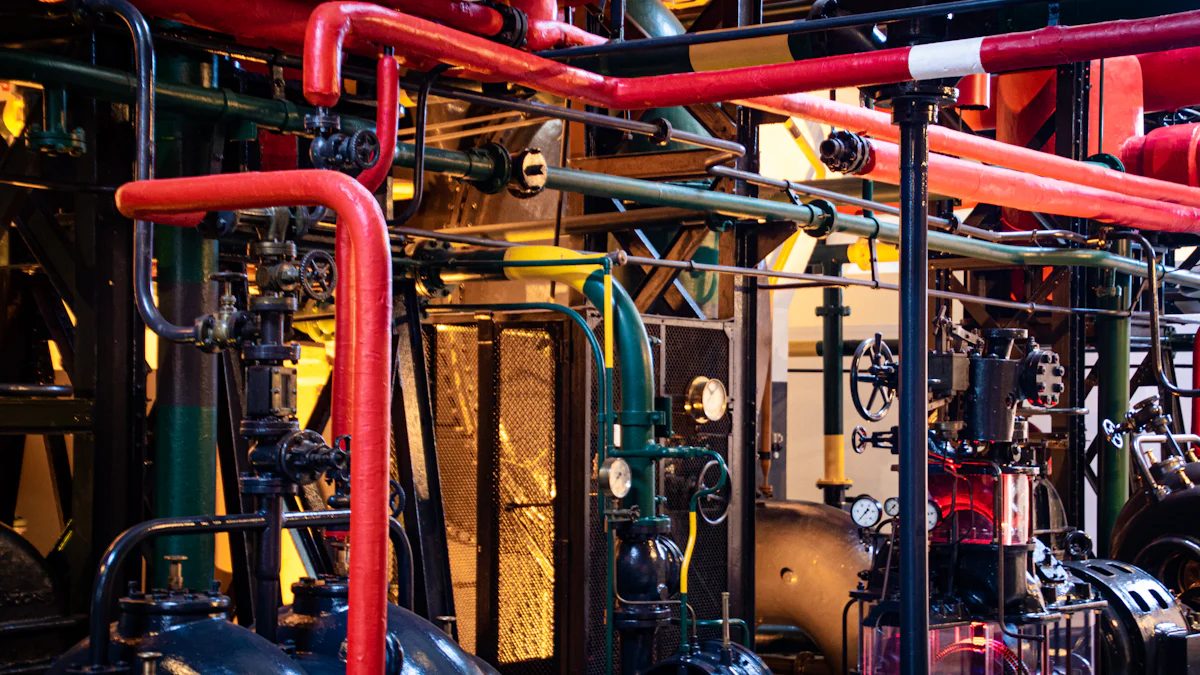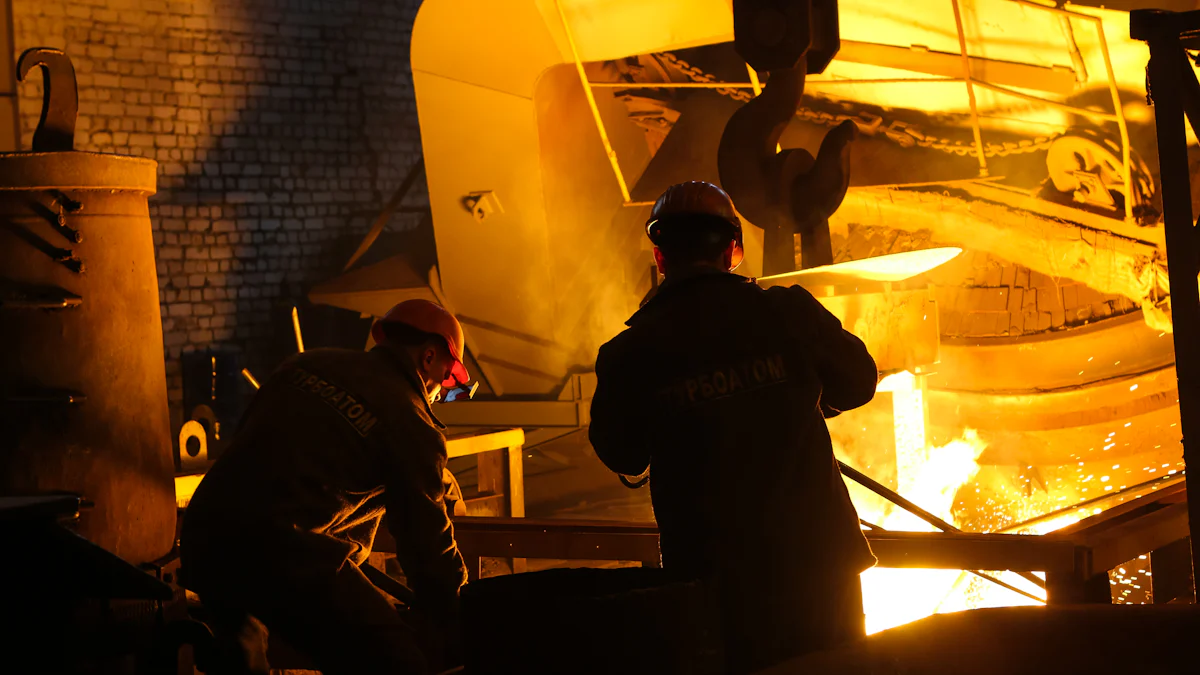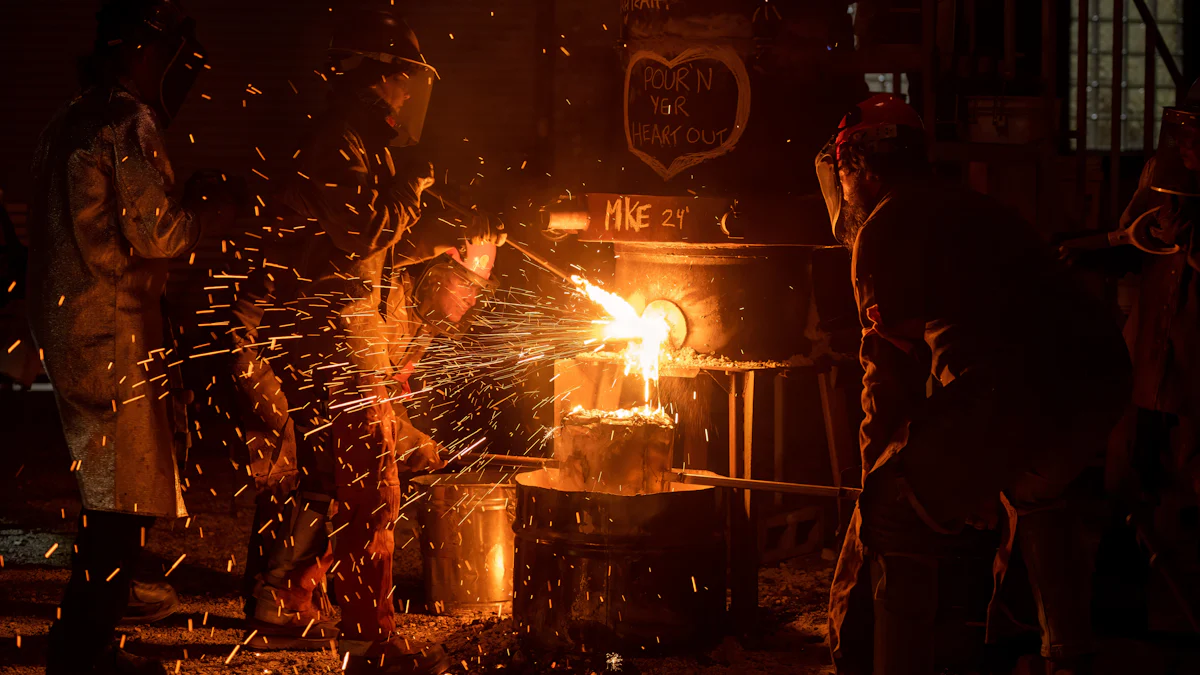
News

When comparing resistance heating and induction heating, you will notice distinct differences in efficiency, cost, safety, and application suitability. Induction heating stands out with its impressive energy transfer efficiency of approximately 85%, significantly higher than the 75-80% efficiency of resistance heating elements. This makes induction heating a more energy-efficient choice, often leading to energy savings of up to 50% compared to traditional methods. However, electric resistance heating systems, despite being 100% energy efficient, often incur higher costs due to electricity generation and transmission losses. Understanding these differences helps you choose the right heating system for your needs.
Key Takeaways
Induction heating is more energy-efficient, with an efficiency of over 85%, compared to the 75-80% efficiency of resistance heating, leading to potential energy savings of up to 50%.
Resistance heating is cost-effective and easy to install, making it suitable for general applications like space heaters and water heaters.
Induction heating provides faster heating times and uniform heat distribution, which enhances productivity and ensures consistent quality in industrial processes.
While resistance heating is straightforward, it can lead to higher operational costs due to energy losses and slower heating processes.
Induction heating systems require a higher initial investment but can result in long-term savings due to reduced energy consumption.
Safety is a significant advantage of induction heating, as it minimizes risks associated with open flames and hot surfaces, making it a safer option for industrial applications.
Choosing the right heating method depends on your specific needs: opt for resistance heating for simplicity and cost-effectiveness, or induction heating for precision and efficiency.
Understanding Resistance Heating

Definition and Process
Resistance heating involves generating heat by passing an electrical current through a resistor. This process converts electrical energy into thermal energy. You can think of it as a straightforward method where the resistance of the material itself generates heat. Unlike induction heating, which heats from the outside in, resistance heating directly heats the part through which the current flows. This method is widely used due to its simplicity and effectiveness in various settings.
Applications of Resistance Heating
Resistance heating finds applications across numerous industries. In aeronautics and automotive sectors, it plays a crucial role in processes that require precise temperature control. The military also utilizes this technology for specialized equipment. In everyday life, you encounter resistance heating in water heaters, resistance ovens, and even smart clothing.
There are two main types of resistance heating: direct and indirect. Direct resistance heating is common in resistance welding and electrode boilers for heating water. It also appears in room heaters and immersion heaters. Indirect resistance heating, on the other hand, is used in resistance ovens for heat treatment, drying, and baking. This versatility makes resistance heating a valuable tool in both industrial and domestic applications.
Advantages of Resistance Heating
One significant advantage of resistance heating is its low initial cost. Electric heating systems are often chosen for their affordability and ease of use. You will find them in space heaters, baseboard heaters, and electric furnaces. These systems are straightforward to install and operate, making them accessible for various applications. Additionally, resistance heating provides consistent and reliable heat, which is essential for many industrial processes.
Disadvantages of Resistance Heating
While resistance heating offers simplicity and affordability, it comes with several drawbacks that you should consider. One major disadvantage is its lower energy efficiency compared to other heating methods like induction heating. Resistance heating systems often lose a significant amount of heat to the environment, which can lead to higher energy consumption and increased operational costs over time.
Another issue is the slower heating process. Resistance heating relies on the gradual buildup of heat through the material's resistance, which can result in longer setup times. For instance, achieving the desired temperature in industrial applications may take hours, impacting productivity and efficiency.
Additionally, resistance heating systems can suffer from uneven heat distribution. The heat generated depends on the material's resistance, which can vary across different sections of the material. This inconsistency can lead to uneven heating, affecting the quality of processes that require precise temperature control.
Maintenance and durability also pose challenges. The heating elements in resistance systems can degrade over time due to constant exposure to high temperatures, leading to frequent replacements and maintenance. This not only increases costs but also causes downtime in industrial settings.
Understanding Induction Heating

Definition and Process
Induction heating is a process that uses electromagnetic fields to heat materials. You can think of it as a method where an alternating current passes through a coil, creating a magnetic field. This field induces eddy currents in the material, generating heat. Unlike electric heating, which relies on resistance, induction heating directly heats the material without contact. This process allows for precise control and rapid heating, making it highly efficient.
Applications of Induction Heating
Induction heating finds its place in various industries due to its efficiency and precision. In the automotive industry, you see it used for hardening gears and other components. The aerospace sector relies on induction heating for bonding and brazing applications. You also find induction heating in the manufacturing of electronic components, where it ensures precise temperature control. Additionally, induction heating equipment is essential in the metalworking industry for processes like forging and melting.
Advantages of Induction Heating
Induction heating offers several advantages over traditional methods. First, it provides high energy efficiency, often exceeding 85%. This efficiency results from the direct heating of the material, minimizing energy loss. You also benefit from faster heating times, as induction heating systems can reach the desired temperature in minutes. This speed enhances productivity and reduces operational costs.
Moreover, induction heating ensures uniform heat distribution. The electromagnetic field evenly heats the material, preventing hot spots and ensuring consistent quality. This uniformity is crucial in applications requiring precise temperature control. Induction heating systems also offer enhanced safety. Since they do not rely on open flames or hot surfaces, the risk of accidents is significantly reduced.
Disadvantages of Induction Heating
Induction heating, while efficient and precise, presents several challenges you should consider. One primary disadvantage is the initial cost. Setting up an induction heating system requires a significant investment. The equipment, including coils and power supplies, can be expensive. This upfront cost might deter smaller businesses or individuals from adopting this technology.
Another issue is the complexity of the system. Induction heating equipment involves intricate components and requires specialized knowledge for installation and maintenance. You may need to hire trained personnel to operate and maintain the system, which can add to the overall cost. This complexity can also lead to longer downtimes if the system requires repairs.
Induction heating systems also have limitations in terms of material compatibility. Not all materials respond well to induction heating. For instance, non-conductive materials like plastics or ceramics cannot be heated directly using this method. You might need additional processes or equipment to heat such materials, which can complicate your operations.
Additionally, induction heating can sometimes lead to uneven heating if not properly calibrated. The electromagnetic field must be precisely controlled to ensure uniform heat distribution. Any misalignment or improper setup can result in hot spots or uneven temperatures, affecting the quality of the final product.
Lastly, the electromagnetic fields generated by induction heating can interfere with nearby electronic devices. You need to ensure proper shielding and distance from sensitive equipment to prevent disruptions. This consideration is crucial in environments where electronic precision is vital.
Comparative Analysis
Efficiency Comparison
When you compare induction heating to traditional methods like electric heating, the difference in efficiency becomes evident. Induction heating boasts an impressive energy transfer efficiency of over 85%. This high efficiency stems from its ability to heat materials directly through electromagnetic fields, minimizing energy loss. In contrast, electric heating systems often lose a significant amount of energy to the environment, resulting in lower overall efficiency. The direct heating process of induction heating ensures rapid heat transfer and precise temperature control, making it a preferred choice in industries where energy efficiency is crucial.
Cost Analysis
Cost considerations play a vital role in choosing between heating methods. Initially, induction heating systems may require a higher investment due to the cost of induction heating equipment. However, the long-term savings in energy costs often offset this initial expense. Induction heating's high efficiency leads to reduced energy consumption, which can result in significant cost savings over time. On the other hand, electric heating systems might have lower upfront costs but can incur higher operational expenses due to their lower efficiency and energy losses. When evaluating costs, you should consider both the initial investment and the potential for long-term savings.
Safety Considerations
Safety is a critical factor in any heating process. Induction heating offers several safety advantages over traditional methods. Since it does not rely on open flames or hot surfaces, the risk of accidents is significantly reduced. The hands-free nature of induction heating also minimizes the need for operator intervention, further enhancing safety. Additionally, the precise control offered by induction heating allows for consistent and repeatable results, reducing the likelihood of errors that could lead to safety hazards. In contrast, electric heating systems may pose risks due to exposed heating elements and the potential for uneven heat distribution. When prioritizing safety, induction heating provides a reliable and secure option.
Application Suitability
When deciding between induction heating and electric heating, you should consider the specific applications and environments where each method excels. Induction heating technology stands out in industries that require fast, focused, and consistent heat. Its ability to provide precise temperature control and rapid heat transfer makes it ideal for processes like brazing, hardening, and annealing. You will find it particularly useful in metalworking, automotive, and aerospace sectors, where precision and efficiency are paramount.
Induction heating also offers significant advantages in manufacturing processes that involve bonding or altering the properties of metals. Its hands-free operation ensures consistent and repeatable results, reducing the need for skilled operator intervention. This feature is especially beneficial in high-volume production environments where consistency is crucial.
On the other hand, electric heating systems are more suitable for applications where simplicity and cost-effectiveness are priorities. You might choose electric heating for general heating tasks in residential or commercial settings, such as space heaters or water heaters. These systems are easy to install and operate, making them accessible for everyday use.
When choosing between resistance heating and induction heating, consider your specific needs. Resistance heating suits applications requiring simplicity and cost-effectiveness, like space heaters or water heaters. Its straightforward setup and operation make it ideal for general use. On the other hand, induction heating excels in precision and efficiency. It offers fast, targeted heating with energy savings and safe operation. Industries like automotive and aerospace benefit from its precise temperature control and rapid heating capabilities. Evaluate your requirements to select the most suitable method, ensuring optimal performance and cost efficiency.
Please give us a message